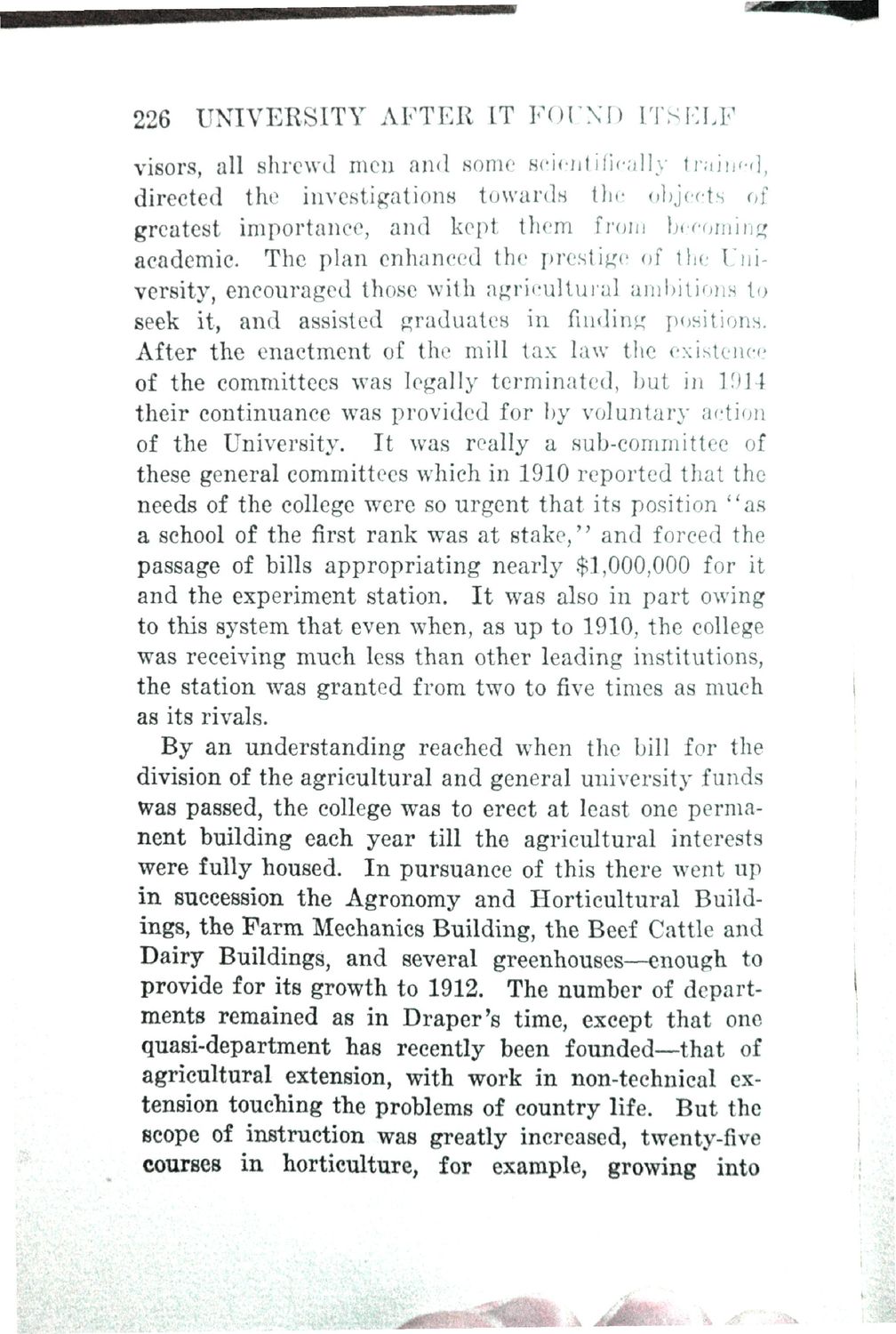| |
| |
Caption: Book - History of the University (Nevins)
This is a reduced-resolution page image for fast online browsing.

EXTRACTED TEXT FROM PAGE:
226 UNIVEBSITY AFTER IT FOUND ITSELF visors, all shrewd men and some scientifically trained, directed the investigations towards the objects of greatest importance, and kept them from becoming academic. The plan enhanced the prestige of the University, encouraged those with agricultural ambitions to seek it, and assisted graduates in finding positions. After the enactment of the mill tax law the existence of the committees was legally terminated, but in 1914 their continuance was provided for by voluntary action of the University. It was really a sub-committee of these general committees which in 1910 reported that the needs of the college were so urgent that its position "as a school of the first rank was at stake," and forced the passage of bills appropriating nearly $1,000,000 for it and the experiment station. I t was also in part owing to this system that even when, as up to 1910, the college was receiving much less than other leading institutions, the station was granted from two to five times as much as its rivals. By an understanding reached when the bill for the division of the agricultural and general university funds was passed, the college was to erect at least one permanent building each year till the agricultural interests were fully housed. In pursuance of this there went up in succession the Agronomy and Horticultural Buildings, the Farm Mechanics Building, the Beef Cattle and Dairy Buildings, and several greenhouses—enough to provide for its growth to 1912. The number of departments remained as in Draper's time, except that one quasi-department has recently been founded—that of agricultural extension, with work in non-technical extension touching the problems of country life. But the scope of instruction was greatly increased, twenty-five courses in horticulture, for example, growing into H B
| |